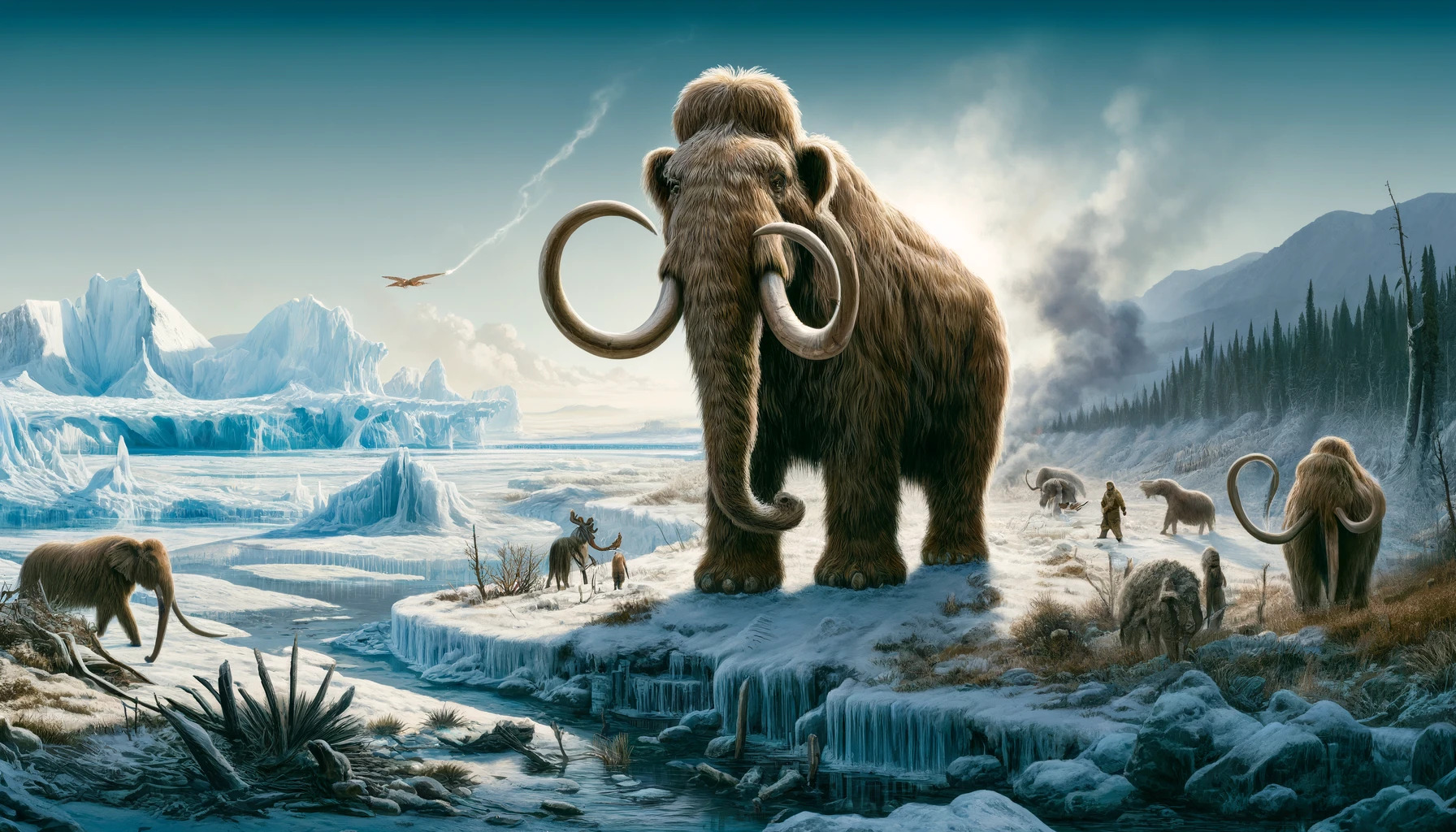The woolly mammoth is one of the most fascinating creatures from the past. It roamed the cold landscapes of Europe, Asia, and North America during the Pleistocene and Holocene epochs. The woolly mammoth went extinct due to a combination of climate change and habitat loss, along with hunting by early humans.
These magnificent animals thrived in icy environments, where their thick fur and large tusks helped them survive harsh conditions. As the Earth’s climate warmed after the last ice age, their habitats shrank, making it harder for them to find food. Understanding the reasons behind their extinction provides insight into how changes in the environment can impact species survival.
Woolly Mammoth Habitat and Range
Woolly mammoths lived in various habitats across Europe, Asia, and North America. Their range changed throughout their existence, shaped by climate and environmental conditions.
Geographical Spread
Woolly mammoths roamed a vast area during the Pleistocene epoch. They inhabited regions from the British Isles to Siberia and parts of North America, particularly in areas like Alaska and Canada.
Evidence shows that they moved in response to changing climates, often following migrations of their prey. Fossils found in diverse locations highlight their adaptability and resilience in varied terrains.
Environmental Preferences
Woolly mammoths preferred cold, open environments. They thrived in tundra and steppe habitats that offered abundant grasses and shrubs.
Their long, thick fur helped them withstand freezing temperatures.
Mammoths also had shorter ears compared to modern elephants, which minimized heat loss. They often lived in areas with permafrost, which preserved many of their remains for scientists to study today.
Extinction Theories
Several theories explain the extinction of the woolly mammoth. Important factors include climate change, human hunting, and a combination of these influences. Each theory offers insights into how these majestic creatures disappeared from the Earth.
Climate Change Impact
As the last Ice Age ended, temperatures rose. This warming shifted habitats, reducing the grasslands where woolly mammoths thrived.
The transition from the Pleistocene epoch to the Holocene period about 10,000 years ago dramatically changed the environment.
Mammoths faced new challenges, including shrinking food sources and altered ecosystems. The change in climate likely played a major role in their decline.
Human Hunting Activities
The growth of human populations brought hunting pressure on woolly mammoths. Early humans hunted these large animals for meat, bones, and hides.
Archaeological evidence shows humans crafted tools to aid in their hunting efforts. This increased competition for survival put extra stress on mammoth populations.
As human groups spread, mammoths became easier targets. This hunting might have significantly contributed to their extinction.
Combination of Factors
Many researchers believe a mix of climate change and human activities caused the woolly mammoth’s extinction.
The changing climate weakened mammoth herds, while hunting reduced their numbers.
With fewer mammoths left and a changing environment, survival became nearly impossible. The interplay between these factors created a perfect storm, leading to the final disappearance of this iconic species.
Scientific Evidence
Researchers have gathered important data to understand why the woolly mammoth went extinct. Two main types of scientific evidence help explain this mystery: fossil records and genetic studies. Each provides insight into the lives of these fascinating creatures.
Fossil Record Analysis
Fossils are key to understanding the habitat and lifestyle of woolly mammoths. By studying remains found in places like Siberia and Wrangel Island, scientists have identified signs of climate and environmental changes.
These studies reveal that woolly mammoths thrived in cold, tundra-like areas. Over time, as the climate warmed, their habitats changed dramatically. The loss of suitable living spaces likely contributed to their decline. Fossil analysis also shows patterns of herd behavior and diet. This information helps researchers understand how these animals interacted with their environment.
Genetic Studies
Genetic studies offer insights into the biology of woolly mammoths. Scientists analyze DNA extracted from preserved remains, which helps to understand their evolutionary history. Recent studies have examined the genomes of 21 woolly mammoths that lived during the last 50,000 years.
These studies suggest that the last mammoths experienced significant genetic diversity. Contrary to past beliefs, it appears that inbreeding was not the primary cause of extinction in the final populations. Instead, changes in climate and habitat loss likely played a larger role. Genetic information helps explain how the population adapted to its environment and responds to challenges.

